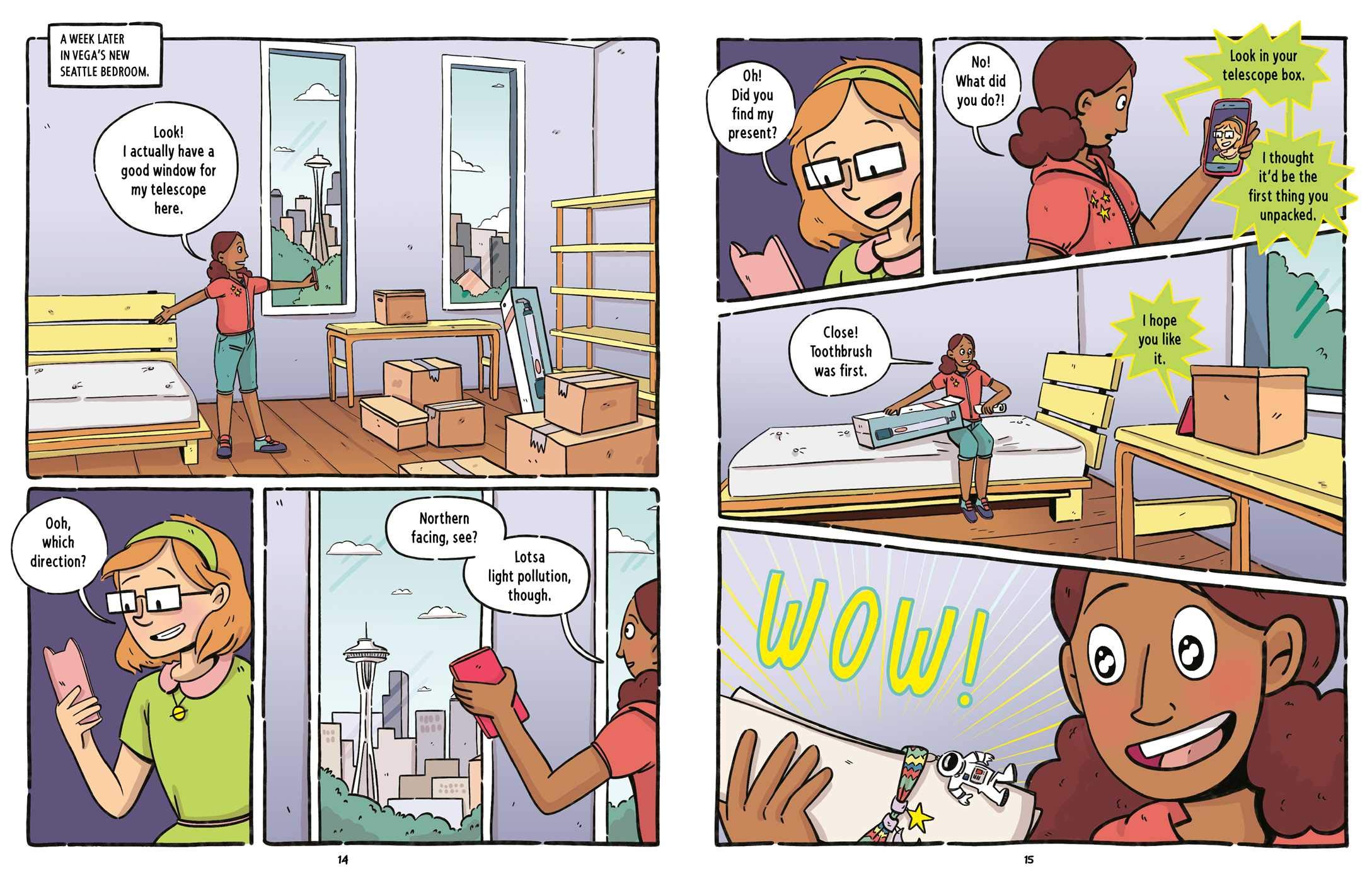Grace Needs Space by Benjamin A. Wilgus and Rii Abrego
Published by Random House Graphic
A Sky of Paper Stars by Susie Yi
Published by Roaring Brook Press
Summary: These graphic novels tell the stories of two very different girls who are both grappling with family issues. Grace lives on a space station with her divorced mom; her other mom, Ba, is a cargo ship captain traveling from one space settlement to the next. Grace is excited to be going on a trip to Titan (Saturn’s moon) with Ba, but she ends up bored and disappointed when Ba is busy with work most of the time. Desperate to see Titan’s sea, Kraken Mare, she sneaks into a group field trip and almost gets herself into serious trouble. When Ba starts having engine trouble on the way back, she has trouble trusting Grace to help her, but Grace (and Mom) manage to save the day, while Ba sees that her own workaholic nature and unwillingness to ask for help have led to some issues with her family. Includes extra artwork showing the development of the characters and the cover. 208 pages; grades 4-7.
In A Sky of Paper Stars, Yuna feels like she’ll never fit in at school. Her parents cling to Korean traditions, while Yuna wants to be more American. After folding 1,000 paper stars the way her grandmother, Halmoni, taught her, she makes a wish to live in Korea, where she feels like she’ll belong. Almost immediately, her mother gets news that Halmoni has passed away, and the family returns to Korea for the funeral. Feeling like she caused her grandmother’s death, Yuna races to fold another 1,000 stars, hoping to bring Halmoni back to life. Includes an author’s note about her experiences that influenced the story and instructions for folding a paper star. 240 pages; grades 4-7.
Pros: Fans of middle school graphic novels will enjoy both of these stories, each featuring a unique setting that emphasizes the commonality of each girl’s emotions and experiences.
Cons: I’m pretty sure I couldn’t fold one paper star, let alone a thousand.














